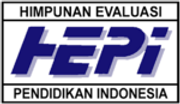Analysis of the effective leadership style of madrasa heads in the 21st century
Abstract
Keywords
Full Text:
PDFReferences
Amelia, L., & Marlius, D. (2018). Pengendalian Kredit dalam Upaya Menciptakan Bank yang Sehat pada PT. Bank Pembangunan Daerah Sumatera Barat Cabang Utama Padang.
Badu, S. Q., & Djafri, N. (2017). Kepemimpinan dan Perilaku Organisasi. Ideas Publishing.
Bahruddin, E. (2016). Kepemimpinan dalam Perspektif Islam. FIKRAH, 8(1).
Ekosiswoyo, R. (2016). Kepemimpinan Kepala Sekolah yang Efektif Kunci Pencapaian Kualitas Pendidikan. Jurnal Ilmu Pendidikan, 14(2).
Hardianto, H. (2016). Gaya Kepemimpinan Kepala Sekolah untuk Meningkatkan Motivasi Kerja Guru Ditinjau dari Perspektif Agama Islam.
Hasibuan, M. S. (2016). Manajemen Sumber Daya Manusia. Bumi Aksara.
H.E. Mulyasa, (2014). Manajemen & Kepemimpinan Kepala Sekolah, Jakarta: PT Bumi Aksara.
Hidayat, R., & Ulya, H. (2019). Kompetensi Kepala Sekolah Abad 21: Sebuah Tinjauan Teoretis. Jurnal Kepemimpinan dan Pengurusan Sekolah, 4(1), 61–68.
Iqbal, N., Anwar, S., & Haider, N. (2015). Effect of leadership style on employee performance. Arabian Journal of Business and Management Review, 5(5), 1–6.
Karim, M. (2010). Pemimpin transformasional di lembaga pendidikan Islam. UIN-Maliki Press.
Kartono, K. (2018a). Pemimpin dan kepemimpinan.
Kartono, K. (2018b). Pemimpin dan Kepemimpinan. Raja Grafindo Persada.
Maryatin, (2013). Peran Kepemimpinan Kepala Madrasah dalam Meningkatkan Mutu Pendidikan Islam. Mudarrisa: Jurnal Kajian Pendidikan Islam Vol. 5, No. 2, Desember.
Mulyadi, D., & Syafitri, A. (2019). Pengaruh Kepemimpinan dan Motivasi Kerja terhadap Kinerja Karyawan di Bank BJB Syariah Cabang Bogor. Jurnal Ilmiah Binaniaga, 11(2), 33–38.
Siagian Sondang, P. (2011). Filsafat Administrasi Edisi Revisi. Bumi Aksara.
Siti Umayah, (2015). Upaya Guru dan Kepala Madrasah dalam Meningkatkan Daya Saing Madrasah. Mudarrisa: Jurnal Kajian Pendidikan Islam Vol. 7, No. 2, Desember.
Soderstrom, From, Lovqvist, & Tornquist, 2011. Peraturan Menteri Pendidikan Nasional Nomor 13 Tahun 2007.
Susanto, Y. (2016). Pengaruh Motivasi dan Gaya Kepemimpinan Terhadap Kinerja Pegawai (Studi Pada Pegawai Dinas Perindustrian Perdagangan dan Koperasi Kota Palembang). Ekonomica Sharia, 1(2), 67–78.
Usman, H. (2012). Kepemimpinan Kepala Sekolah/Madrasah di Abad Ke-21. Jurnal Tenaga Kependidikan, 5(2).
Winardi, J. (2011). Motivasi dan Pemotivasian dalam Manajemen. Cetakan ke-6. Rajawali.
DOI: https://doi.org/10.18326/mdr.v13i1.1-19
Refbacks
- There are currently no refbacks.
Copyright (c) 2021 Muh Syauqi Malik, Tutut Hilda Rahma, Vifta Agnia Utami

This work is licensed under a Creative Commons Attribution 4.0 International License.

This work is licensed under a Creative Commons Attribution 4.0 International License.
Program Studi Pendidikan Guru Madrasah Ibtidaiyah (PGMI)
Universitas Islam Negeri (UIN) Salatiga, Indonesia
Jl. Lingkar Salatiga Km. 2 Pulutan, Sidorejo, Kota Salatiga, Jawa Tengah 50716,
Telp. (0298) 323706 – Fax. (0298) 323433
Technical Support: jurnalmudarrisa@iainsalatiga.ac.id
P-ISSN: 2085-2061
E-ISSN: 2541-3457




